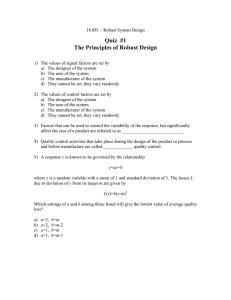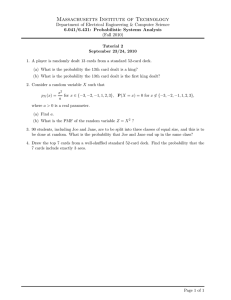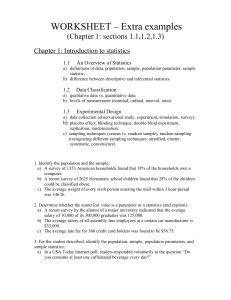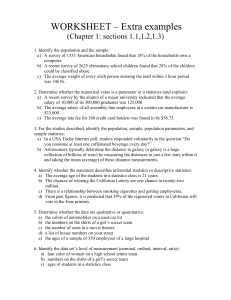MATH 2F81 SECOND MIDTERM NOVEMBER 11, 2011 Full credit
advertisement
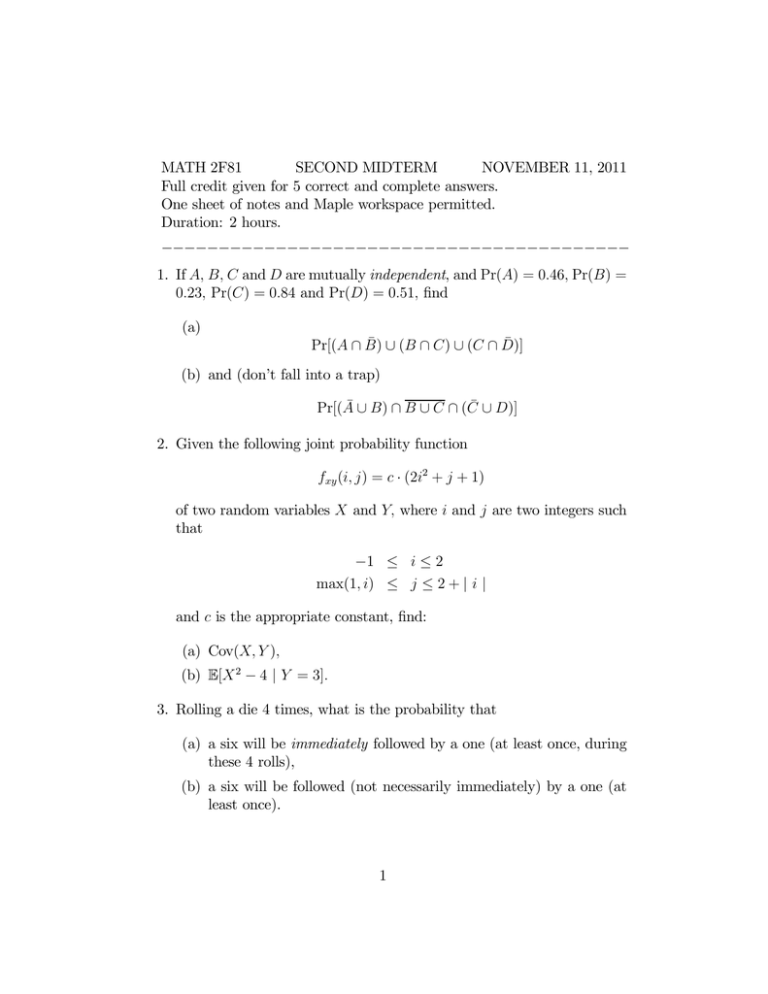
MATH 2F81 SECOND MIDTERM NOVEMBER 11, 2011 Full credit given for 5 correct and complete answers. One sheet of notes and Maple workspace permitted. Duration: 2 hours. _________________________________________ 1. If A, B, C and D are mutually independent, and Pr(A) = 0.46, Pr(B) = 0.23, Pr(C) = 0.84 and Pr(D) = 0.51, find (a) Pr[(A ∩ B̄) ∪ (B ∩ C) ∪ (C ∩ D̄)] (b) and (don’t fall into a trap) Pr[(Ā ∪ B) ∩ B ∪ C ∩ (C̄ ∪ D)] 2. Given the following joint probability function fxy (i, j) = c · (2i2 + j + 1) of two random variables X and Y, where i and j are two integers such that −1 ≤ i ≤ 2 max(1, i) ≤ j ≤ 2 + | i | and c is the appropriate constant, find: (a) Cov(X, Y ), (b) E[X 2 − 4 | Y = 3]. 3. Rolling a die 4 times, what is the probability that (a) a six will be immediately followed by a one (at least once, during these 4 rolls), (b) a six will be followed (not necessarily immediately) by a one (at least once). 1 4. Given that X has the following distribution X = −2 0 1 3 5 8 Pr: 0.15 0.25 0.30 0.15 0.10 0.05 compute (a) its mean, standard deviation and skewness, (b) its third factorial moment. 5. Three cards are randomly dealt from a standard deck of 52 cards, followed by rolling a die as many times as the number of spades obtained. (a) Compute the probability of getting more than 3 dots in total. (b) Given that we got more than 3 dots in total, find the conditional probability of having dealt more than one spade. 6. A gambler is charged $4 to play the following game: 5 cards are dealt randomly from a standard deck, and he receives $3 for each face card (J, Q, K). Find (a) the expected value and standard deviation of his net win (in one such game), (b) the probability that he will be losing money after 5 independent rounds of this game. 7. Consider two independent random variables X1 and X2 , each having the following probability generating function ¶ µ z−1 P (z) = exp 5 × 2−z Find (a) the mean and standard deviation of X1 − 2X2 , (b) Pr(5 < X1 + X2 < 15). 2
